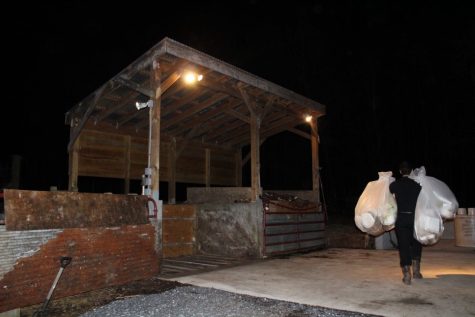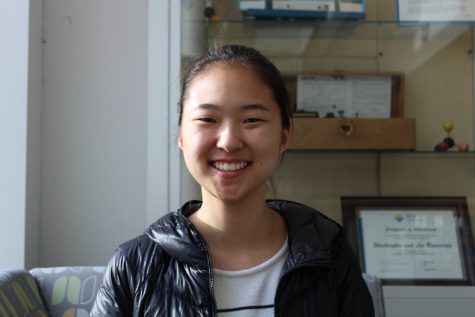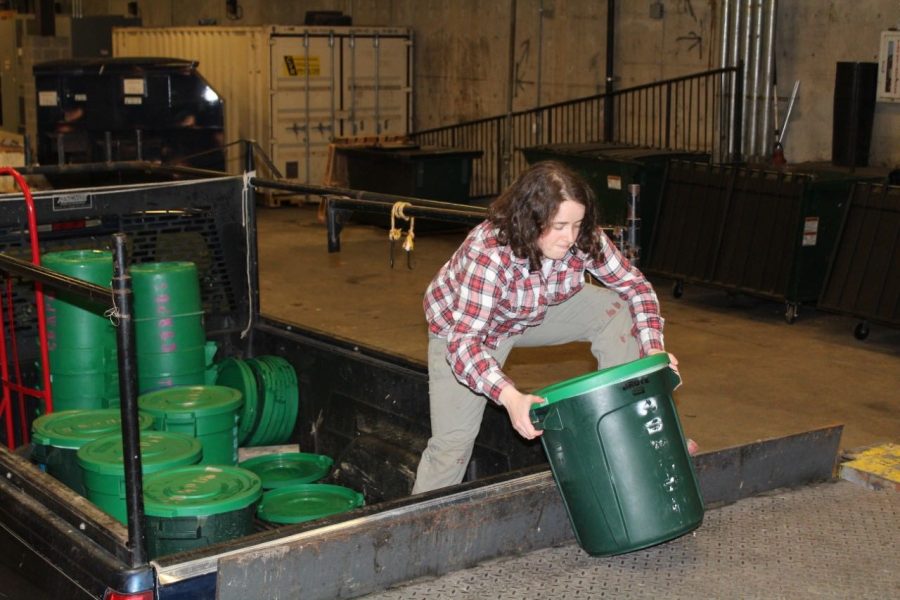Yes, those loud wrappers from “Coop” are actually compostable
The amount of compost collected on campus has quadrupled since 2008
March 18, 2019
Sustainability efforts on campus have grown this year, and students who are part of Compost Crew say it’s worth the stench.
Bill Hamilton, the biology department chair, said he remembers when composting on campus started in 2002 with a regional grant.
“Students were going around picking up compost in a golf cart,” Hamilton said.
Since then, Compost Crew has grown into the mostly student-run team of 18 food waste collectors on campus. The group is headquartered at the Sustainability House at 21 University Place.

Compost Crew is just one of the initiatives undertaken by the sustainability program on campus, but it is one of the fastest growing, said Kim Hodge, the university’s sustainability director. A big step this year toward sustainability was every dining facility on campus switching to-go ware from plastic to compostable.
Hodge said the amount of compost collected has near quadrupled since 2008, from four and a half tons during that academic year to more than 17 tons, as of last year.
“Dining Services decided to make the switch to all compostable consumer products because it is simply the right thing to do,” said Ryan Miller, a dining services director.
The move allows the university to minimize the social and environmental impacts that stem from reliance on non-recyclable consumer products.
Hodge said Dining Services was accommodating and enthusiastic about the change. All to-go containers, green forks, spoons and knives used by the five dining facilities are compostable. In-house packaging, such as the loud, crinkly wrapping for muffins at Cafe 77 (Coop), and the sushi containers are also compostable.
The transition made for a very busy last semester for members of the Compost Crew. From August to December 2018 alone, Compost Crew collected 22.09 tons (for reference, that’s three and a half times heavier than a full-grown African elephant).
“We were over capacity and runs could take as long as two hours,” said Tiffany Ko, ‘20.

Ko was introduced to Compost Crew as a first-year during her pre-orientation trip that focused on sustainability. She said she works with the program because she wants to give back to the university and connect with more people on campus.
Students can sign up for several shifts a week, called “runs.” These runs are typically made by a pair of students who collect compost at several sites, including third-year dining, the Marketplace (D-hall), and E-Cafe in Hillel House. The compost is then taken to compost bins near the Campus Gardens, where it’s topped with animal bedding and left to sit until it can be used. Hamilton works with the compost to make sure it has the right pH, nitrogen to carbon compositions and temperature.
The finished product is then used by the Campus Garden to plant fruits and vegetables, which are used by Dining Services and Campus Kitchen, or donated to the food pantry.
“It’s a really pretty little closed loop cycle,” Hodge said.
This semester, the Sustainability House has been able to hire a compost operations assistant who works part time to take care of day-to-day tasks and alleviate volume issues.
Miller notes that the installation of trashing sorting receptacles this year for compostables, recyclables and landfill (as can be seen in Cafe 77 or E-Cafe) has also posed another challenge. Students and staff can sometimes find it difficult to figure out what is copostable and what is recyclable when disposing of their waste.
According to Ko, a rule of thumb to keep in mind to when sorting out compostables and non-compostables is to look for the green leaf symbol or the word “eco-product” on packaging.
If all else fails? “When in doubt, throw it out,” Hodge said.

The logic behind this rhetoric comes from the idea of contamination in the stream. If there’s any plastic, recyclables, or other non-compostable items in compost collections, it can interfere with the composting process and add to the work of the students to have to sort out compostables from non-compostables. Usually, a contaminated collection is just thrown out because it’s not worth the time to sort.
Compost Crew has several goals for the future: to educate students and staff about composting on campus and figure out what to do with all the excess compost that’s piled up this year.



